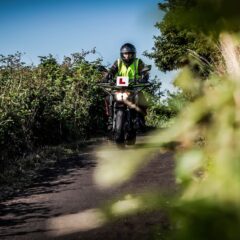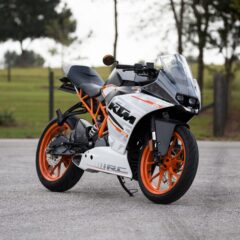
7 Top Motorcycle Accessories
With Christmas just around the corner, you might be wondering what to get your favourite motorcycle enthusiast or even a little something for yoursel...
 Phoenix Motorcycle Training LTD
Phoenix Motorcycle Training LTD
 Phoenix Motorcycle Training LTD
Phoenix Motorcycle Training LTD

Before you can even attempt to get a motorcycle licence, you’ll need to complete your compulsory basic training (CBT). The CBT prepares riders to use UK roads safely and continue developing their motorbike riding skills in real-life situations.
Getting a full, unrestricted motorcycle licence is quite a journey. That journey to the freedom of two wheels begins with the basics. Compulsory basic training is exactly that – the most basic preparation needed to begin your motorcycling (or scooter-riding) career.
It wasn’t until December 1990 that motorcycle and scooter riders had to undergo compulsory basic training before taking to UK roads. Prior to then, all anyone needed to ride a 125cc motorcycle or scooter on public roads was courage, balance and a driving licence for a car.
Unsurprisingly, road accidents involving motorcyclists were common. In the ‘80s, riders were 30 times more likely to be killed on the road than drivers of cars. This and campaigning by the British Motorcyclist Federation resulted in the introduction of compulsory basic training for people interested in taking to two wheels.
Compulsory basic training, or CBT, is the first step to getting a licence for two wheels. That includes motorcycles, scooters and mopeds too.
The CBT has five elements to it. Each element focuses on an essential skill needed to ride safely. Combined the elements of a CBT are designed to give riders the skills and knowledge needed to ride safely on UK roads. Becoming a safe rider is the aim of any compulsory basic training course.
Compulsory Basic Training courses start off with an introduction to the course and progress through the theory to practical training with a motorcycle or scooter so you can learn safe riding practices. CBT training is taken both off-road, at the training centre, and on-road with your instructor close at hand and in radio contact at all times. The good news is, with us, you don’t need your own motorcycle to train with. You can wait until you’re certified before you go bike shopping.
How long the CBT takes depends very much upon you. The aim of a CBT is to ensure you know enough, and have strong enough riding skills, to continue learning and practicing your scooter or motorcycle riding on your own. It’s helpful to prepare for your CBT by learning the UK road rules.
A CBT course can only be taken by people who have a provisional or full driver’s licence. These licences let you legally use the road. A provisional licence shows you are actively learning to be a safe driver and/or rider.
Many people complete their CBT certificate within a day. As your training progresses, your instructor will keep you informed about your progress. As the day unfolds, your training gets tailored to focus on the areas you need to improve in. If you don’t quite make it, you’ll need to arrange for further training.
Compulsory basic training doesn’t finish with a test. Rather it is an assessment by your instructor of the level of competence you have achieved on a motorcycle, moped or scooter. Technically, you can’t fail a CBT. Instead, your instructor may advise you that you need to return for additional training before they are able to give you a DL196 certificate.
In some cases, people who hold a full driver’s licence may not even need to take a CBT course. If you only want to ride a moped or scooter up to 50ccs and have had your full driver’s licence since February 2001 or before, you’ll be exempt from needing a DL196. This is commonly known as ‘grandfather rights’. If you have a lowercase ‘p’ on your pink, plastic UK driver’s licence, you have these riding rights.
After you get your CBT – the DL196 certificate – you’ll have two years to get a full motorcycle licence. But you don’t have to move up the motorcycling licence ladder if you don’t want to. The kind of licence you need depends very much on where and what you want to ride.
A full motorcycle licence lets you carry a pillion passenger, ride without L plates, use the motorway (as long as your motorcycle or scooter is 125ccs or more), and avoid re-traiing for another DL196 certificate. If you only want to pootle around town on a small scooter or moped, a CBT may be all you need.
If you don’t upgrade your CBT certificate to a motorcycle or scooter licence, it’ll expire after two years. To keep riding, you’ll need to re-train for your CBT. The good news is, if you’ve been riding throughout those two years, you’ll likely be able to become re-certified within a day.
Compulsory basic training has lowered the number of incompetent riders on UK roads. Thanks to that, motorcyclists and other road users are a lot safer than they were before the 90’s. Accidents involving motorcycles have dropped in recent years. Fatalities fell by 58% between 2004 and 2020.
Most motorcycle collisions happen at T-intersections and 80% of motorcycle accidents happen due to someone else’s negligence. Part D of your CBT course covers how to stay safe by making sure you are visible, positioned correctly, and by anticipating hazards and other driver’s behaviour.
Similarly to the technology advancements of today, the automotive industry developed faster than the laws which govern it. This has a lot to do with the many different rules and regulations related to riding a motorcycle in the UK. Licencing laws and guidance make the roads safer for everyone. Taking the correct training to ride a motorcycle ultimately enhances your enjoyment as well as your safety on the road.

With Christmas just around the corner, you might be wondering what to get your favourite motorcycle enthusiast or even a little something for yoursel...

If you love motorcycle riding, you’ve probably daydreamed about riding a motorbike for a living. A professional racer or stunt rider is OK for some...

Getting a UK motorcycle licence can seem a complicated process. Particularly when compared to a driving licence for a car. Whether you choose the pro...
This website uses cookies to personalise content, ads, and analyse traffic, sharing data with partners who may combine it with other information. See our Privacy Policy for more information.